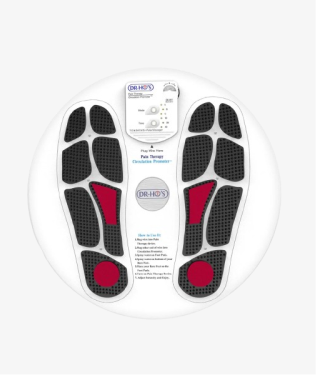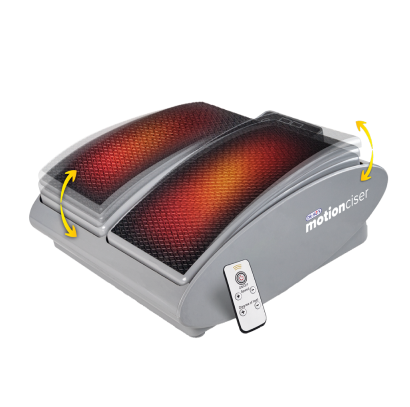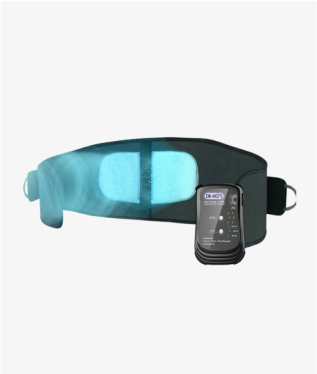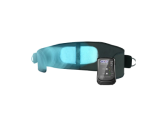April 9, 2021
Calling all back pain sufferers: Get your essentials checklist for finding upper back pain relief!
If you’re dealing with upper back pain, you’ve come to the right place. No matter how you’re managing your pain right now and no matter where that pain came from, there are ways to keep back pain at bay without the use of harsh drugs or invasive procedures. But with so many options available out there in the pain-relief marketplace, it can be hard to figure out which method will be most effective for you. Let us help you cut through the clutter and find more meaningful ways to get upper back pain relief when you need it most. Here’s a checklist to get you started!
Where does upper back pain come from?
In general, back pain can have a variety of causes, from behaviours as simple and common as hunching forward while seated to more serious chronic conditions. But upper back pain in particular is most often caused by just one of two reasons:
-
Muscular strain and irritation: Upper back pain is often caused by either a lack of strength (muscle deconditioning) or an overuse of the large muscles surrounding the shoulder blades. Repetitive motions are a common culprit.
-
Joint disfunction: Disfunction in the thoracic spine (the middle and largest section of the spine) caused by physical injuries or a degenerative disease affecting the joints can lead to upper back pain.
In many cases, back pain is unavoidable. However, there are steps you can take going forward to not only soothe and manage the pain you are currently experiencing, but also prevent pain in the future. Keep reading to discover our checklist of alternative, at home methods for finding upper back pain relief that anyone can implement into their daily routines.
1. Stretch and strengthen shoulder muscles
Unless otherwise directed by your preferred healthcare provider, don’t stop moving due to your pain! This is especially important for those whose upper back pain comes from muscle deconditioning or strain.Prepare for any movement from household chores and gardening to outdoor activities by stretching in order to prevent strain and injury. Some simple stretches for upper back pain relief include:
- Rolling the shoulders forwards and backwards.
- Overhead arm reaches from side-to-side.
- Yoga poses such as cat-cow pose and child’s pose.
To strengthen the affected muscles surrounding the shoulder blades, upper back pain sufferers can target these muscles specifically with tailored exercises. A simple move to get started involves dumbbells of any weight, suited to your comfort, and a chair. Follow these steps to start:
Step 1: Lean forward and hold onto the chair with one had for stability.
Step 2: With the dumbbell in one hand, pull upwards in a rowing motion to squeeze your shoulder blades.
Step 3: Switch to the other hand and repeat.
2. Practice better posture, both standing and seated.
Sitting and standing properly can be a difficult habit to start, especially considering how comfortable it can feel to slouch forward. This temporary relief can bring about long-lasting discomfort, though, as it puts pressure on joints and other tissues in the spine, leading to faster degeneration and pain.
There isn’t a better time than the present to start shifting your habits towards proper posture. We recommend you evaluate your seating around the house and at work, if applicable. Your seating should be adjustable and encourage proper posture with back support that supports the curvature of your spine. 
5 Steps to Better Posture While Sitting or Working from Home
Step 1: Situate your back against your chair; your seating should support the curvature of your spine, situated at a 90-degree angle.
Step 2: Place any screens or other materials at eye level. If this is not possible given the height of your desk, you may need a tool like a laptop raiser.
Step 3: Place your feet firmly on the ground, without crossing your legs. In the correct position, your knees should be slightly lower than your hips. This may require some chair adjustment.
Step 4: Ensure that you are able to use your any materials on your desk with your wrists and forearms straight. Your keyboard, mouse or other materials should be kept as close to you as possible to prevent you from bending forward. This may also require further chair adjustments.
Step 5: Take breaks often to stand up, walk around, and get into the proper seating position again.
3. Use TENS and other pain-relieving devices.
Upper back pain sufferers can use tools and devices to manually address their back pain from home. Find upper back pain relief with the help of:
-
Foam rollers
-
Handheld or wearable massagers
-
Acupressure mats
In addition to these tools, those looking for upper back pain relief can find TENS therapy devices to be particularly helpful; like the other tools mentioned, TENS therapy devices can feel like a massage, but they are powered by a technology that can help back pain sufferers find effective, temporary relief on a day-to-day basis.

What is TENS?
TENS (transcutaneous electrical nerve stimulation) therapy is delivered via a TENS machine that conducts gentle electric currents through adhesive pads to the affected area. TENS is effective for relieving pain as it works to overload the nervous system with signals so that pain signals sent out by damaged nerves do not register in the brain. Another way that TENS therapy works to help alleviate pain is by increasing levels of endorphins — a naturally-occurring chemical in the body that helps to relieve pain.
More information on TENS Therapy and product recommendations for upper back pain relief
-
Learn more about how a TENS machine works behind-the-scenes to temporarily relieve pain
-
Find out how to place body pads from your DR-HO’S device to target back pain
4. Try massage therapy for upper back pain relief.
Find some much-needed relief and restorative relaxation with massage therapy. A massage from a registered massage therapist (RMT) can be particularly beneficial for back pain sufferers. Depending on your pain needs and comfort level, your massage can be tailored with varying techniques and pressures to suit you. A massage therapist can target your sore muscle fibres and the surrounding connective tissues to help reduce stiffness and improve circulation in the affected areas. Other benefits of massage may include:
-
Reducing stress
-
Lowering heart rate and blood pressure
-
Improving energy and alertness
-
Improving immune function

5. Practice yoga to stay active and improve mental wellbeing.
This practice is not only a way to stay physically active in order to prevent injury and increase endorphins, but it’s also a healthy way to make time for oneself and destress. Yoga can help back-sufferers with the following:
-
Building strength, flexibility and improving balance
-
Getting more restorative sleep after activity
-
Improving mood and reducing stress levels
Many yoga poses encourage elongating and stretching the spine while breathing deeply and mindfully. Try the Reclined Supine Twist pose as an easy way to get started with a yoga practice:
Step 1: Lie on your back.
Step 2: Draw your knees into your chest. Drop your knees to one side of the body.
Step 3: Keep your upper body as straight as possible. You should feel a stretch in the back. Breathe deeply into the stretch.
Step 4: Repeat on the other side of the body.
6. Use heat therapy to soothe sore, achy muscles.
Considering that muscle overuse or deconditioning is a common cause of upper back pain, heat therapy can be particularly helpful for managing this kind of pain. At-home heat application can also be a budget-friendly alternative to other forms of physical therapy, with no appointments required either.
Apply heat to your pain-affected areas with gels, creams or heating pads, or visit a sauna, hot tub, or take a warm bath at home. Whichever application you choose, heat therapy can improve blood circulation to promote healing of damaged tissues and help stretch tissues, reducing uncomfortable stiffness.
7. Adjust your sleeping positions to avoid back pain.
Back pain sufferers can find that while it’s already difficult enough to fall asleep with back pain, sometimes your sleeping positions can make it even worse in the morning. To avoid this, firstly assess your mattress and ensure that you have the appropriate firmness for your comfort; a medium firm mattress can work for most. Pain sufferers may be able to find some upper back pain relief with these sleep positions:
-
Sleep with a pillow between or underneath your legs.
-
For side sleepers, sleep with a pillow between your knees.
-
For back sleepers, use a pillow between the knees or place a rolled-up towel in the small of your back.




















